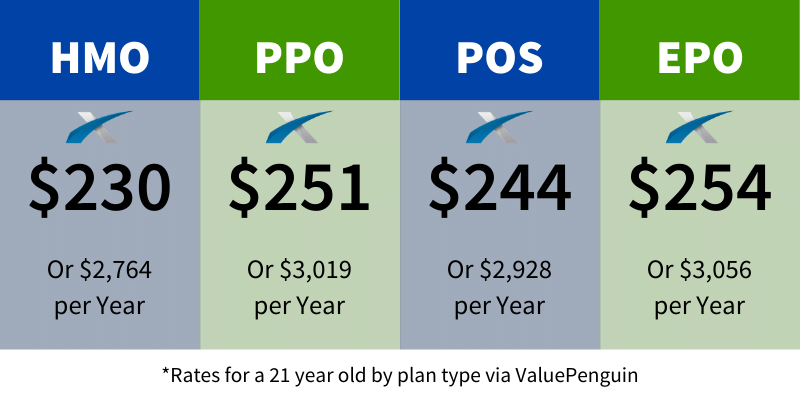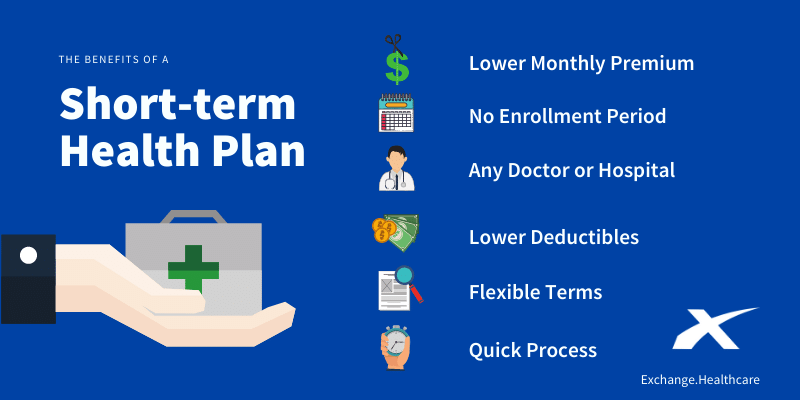Before You Purchase Dental Insurance: Who Needs It and When it Pays Off
While oral health often directly affects the health of your entire body, it is not covered under most regular health insurance plans and must usually be purchased separately by those who wish to have it. It can be easy to gloss over this type of insurance as you make major financial decisions for yourself and your family. However, when something happens to your teeth or gums that requires immediate assistance or an expensive solution, you will thank yourself for having had the foresight to purchase this safety net that can protect you from financial loss or hardship.
This dental insurance guide will cover a variety of in-depth topics regarding this financial solution and will help you answer the following questions for yourself.
- What is dental insurance?
- Who needs a dental insurance plan?
- Is dental insurance worth it?
- How can you get a dental insurance plan for yourself?

What Is Dental Insurance?
Dental insurance is a type of financial protection plan designed to help you afford basic preventive dental care as well as unexpected dental expenses, restorative solutions and a variety of common and emergency oral treatments. While no plan will pay for 100 percent of all costs of ongoing care for non-routine needs, there are several popular plans from which you can choose these days depending on how much you are willing to pay in premiums and which provider you wish to see. Thankfully, it is typically far easier to find and understand appropriate dental insurance plans than it is to choose the right health insurance plan thanks to the straightforward nature of these simple policies.
Available Dental Insurance Plans
Most dental insurance plans are offered by private companies these days and are generally easy to choose based on which dentist you wish to see and how much you wish to have covered by your policy. If you already have a dentist with whom you have built a strong relationship, simply look for a plan that your current office will accept. However, if you do not already have a dentist, you may be able to find a cheaper plan that offers a variety of in-network providers in your area.
Dental insurance plans available today can generally be broken down into four main categories. The first option is the Preferred Provider Organization (PPO) plan. Under this plan, you can choose to go to any dental provider that you wish. However, you will be reimbursed at a higher rate if you choose an in-network provider rather than an out-of-network provider. You do not need to be referred to a new provider if you wish to switch dental offices.
A somewhat cheaper plan option is the Dental Health Managed Organization (DHMO) plan. Much like an HMO plan that is purchased as health insurance, you will only get insurance benefits if you see your primary dental provider. If you need to see another provider, you will have to be referred to him by your primary provider to continue receiving your benefits. The PPO and DHMO plans pay a percentage of the dentist’s charges at a reasonable or customary rate according to the contract set up between the provider and the insurance company.
The third plan type is the indemnity plan, which is a direct reimbursement program. As is the case with the PPO plan, you will be able to see any dental provider that you like. However, unlike many other plans, the indemnity plan reimburses you directly for any type of treatment you receive.
The fourth option isn’t actually insurance at all, but in some cases can provide more savings than the others. They are what we call dental discount plans. These plans also use a PPO network like the first option, but will provide a discount on all procedures between 5-50% as long as you visit a provider within the network. The main difference is they do not have a yearly maximum like most of the others, which is usually around $1,500 to $1,800.
Meaning even if your HMO plan covered 80% but had a $1,500 yearly maximum. If you had a crown replaced and the cost was $4,000. Your insurance would only pay $1,500 and leave you with the remaining $2,500.
You will need to consider what you want your dental insurance plan to cover before you commit yourself to one for the year. Some plans require a predetermination of benefits before you head to the dentist for routine or restorative treatments. This process is usually known as preauthorization, but it can be difficult for many individuals to remember.
You will also want to consider what services your insurance plan covers. For example, it may only cover diagnostic and preventive services rather than including emergency and restorative services as well. Consider what percentage of your care you are willing to pay for and what annual limits may be on your plan. Finally, many plans do not give you full benefits for up to a year or two after you purchase them. There may be limitations on certain major procedures to protect the insurance company from loss. If you know that you will eventually need bridgework or a root canal, you will want to ensure that an appropriate dental plan is in place long before you schedule an appointment.
Who Needs a Dental Insurance Plan?
Unlike health insurance, many Americans do not hold dental insurance policies these days. In fact, 23 percent of the population has no coverage whatsoever, and this number includes many people who are unable to get coverage from their workplaces. As of 2016, 90 percent of those with coverage had gotten their policies through their employers or through membership programs, such as AARP. Approximately 7 percent purchased insurance on their own while just 3 percent had dental policies that were connected to their health insurance policies.
Statistics show that individuals who have dental insurance are far more likely to go to the dentist for routine, preventive care than are those who have to pay fully on their own. Those who do not receive this routine care are far more likely than their counterparts to require major dental work later in life. This is the largest reason for needing a dental insurance plan. Although the monthly premiums may seem initially off-putting, the policy can be seen as an investment in long-term oral health and cost savings over a lifetime. Plus, because oral health is directly connected to some components of physical health, including that of the cardiovascular system, this is an investment well worth making for a long, happy and healthy life.
In particular, families with children as well as older adults should seriously consider holding dental insurance plans because these age groups typically have the most dental problems. Coverage is also particularly important for those who are living paycheck to paycheck as the monthly cost for premiums will be far easier to afford long-term when compared to the interest one would have to pay on dental work that is paid for with a credit card.
How Much Does Dental Insurance Cost?
For the majority of people who have generally healthy teeth, the annual cost of dental insurance should be less than the cost of twice-yearly cleanings, two examinations and a full set of x-rays. For those who may have more extensive problems, the cost of insurance should be a good overall bargain as it will bring down the costs of most procedures by at least 50 percent.
While some plans can start as low as $8 per month for a single individual, the majority of decent dental insurance plans cost far more than this. On average, dental insurance costs across the United States range from $15 to $50 per month for most individuals and families. The average cost of premiums per year is $300. While this may not make good financial sense if you have no plans to visit the dentist twice per year as recommended for preventive care, it is usually a good idea to have a solid plan in place if you plan to have routine checkups as recommended and if you want a safety net in place for major needs.
If you or one of your children will need orthodontic care, you will most likely want to purchase additional insurance as this is not usually covered by your basic policy. Usually, an additional $10 per month will help you more easily pay down the cost of orthodontic treatment, which can cost over $3,000 on average in the United States.
In general, the more that you pay for dental insurance, the better your benefits will be. For example, a higher cost plan may have lower copayments that are due when you visit the dentist, higher maximums, lower deductibles that you must meet before the insurance company begins paying and better coinsurance if you are on a PPO plan.
Visiting the Dentist With and Without Insurance
As you consider overall dental insurance costs, you should know what the price difference is between visiting the dentist with and without insurance. For example, if you visit your dentist and pay for your care out of pocket, you will most likely be charged between $105 and $200 for a cleaning with an examination and another $150 if you need X-rays. The average cost for a tooth extraction in the United States is $293 while root canals can cost between $400 for front teeth and $1,100 for molars on average. The crown that would be needed after the root canal can cost between $1,000 and $2,000.
On the other hand, if you have dental insurance, your preventive tooth cleanings, examinations and X-rays would be covered at 100 percent. If you need a filling, which can cost $150 to $250 out of pocket, you will only have to pay for 70 to 80 percent of the cost. Major work, such as root canals and crowns, are usually covered at 50 percent on most policies.
Keep in mind that unlike health insurance, dental insurance is not typically seen as a policy that you purchase for major catastrophes that cost thousands of dollars. This is because there is usually a cap on how much the insurance company will pay for your care each year. Not only will you have the deductible to meet, but also you may be faced with a maximum annual benefit of $2,000 to $3,000 from the company. Sometimes even much lower around $1,500 to $1,800.
Because nearly 60 percent of Americans regularly delay preventive and necessary dental care because they find that the cost is too prohibitive, you may find that you are more apt to attend recommended appointments and seek quick care for emergencies or pain if you know that you will only have to pay up to 50 percent of the cost of your procedures.

Where Can You Buy Dental Insurance?
If you’re wondering how “Trumpcare” or the American Health Care Act (AHCA) has affected the way dental insurance works? At its most basic, this health care reform bill is a response to what has become known as Obamacare or the Affordable Care Act (ACA). Trumpcare changes have done away with the Obama-era mandate to offer dental insurance plans to all children under the age of 18 when purchasing health insurance. Today, private insurance companies are only required to offer one such ACA-compliant plan to each applicant. In addition, these Trumpcare changes do not require people of any age to hold dental insurance.
Other than the health care marketplace, there are plenty of other places where you can find a perfectly adequate dental insurance plan for you and your immediate family members. For example, you may first want to check if your employer offers a policy. If it does, this option will probably provide you with the cheapest coverage for the highest level of care. You can also shop through an insurance agent or broker who will help you determine exactly which coverage is right for you. If you are ready to shop on your own and believe that you know which type of policy would be best for you, you can check directly with dental insurance companies online.
What Documents Do You Need to Get Dental Insurance?
As previously mentioned, dental insurance is typically far less of a hassle to buy when compared to health insurance. You do not usually have to fill out nearly as much paperwork to qualify for coverage. However, you will need to provide a few documents before you can expect to be accepted by the company. First, you will need to fill out the application, which can usually be done with pen and paper or can be completed online. This application will probably address preexisting oral health issues, which may not be covered for the first year or two under your policy. Second, you will also need to prove your identity, which can usually be completed with your driver’s license, a passport or even a bank statement or utility bill with your name and address on it. It is rare that anyone is turned down for initial dental insurance coverage.
Is dental insurance worth it for you? If you are like the majority of people, you will find that it is well worth your money especially if you have dependents and do not have a great deal of disposable income. It is also a great financial decision if you plan to visit the dentist routinely twice every year or if you know that you have upcoming dental needs that would be fully or partially covered under dental insurance.
After reading this dental insurance guide, you may now realize that you need to purchase dental insurance soon. If that is so, first consider which type of plan would work best for your finances and for your personal preferences before joining during open enrollment season or at any point during the year if you fall into one of several exemption categories. With dental insurance, you will feel more peace of mind when visiting the dentist, knowing that you will finally be able to afford quality oral care.




Exchange Healthcare News
“The vast majority of consumers do not know the ins and outs of health insurance because they never have needed to,” says Eric Stauffer, a former insurance agent who now rates and reviews insurance companies online.
About 31 mins ago